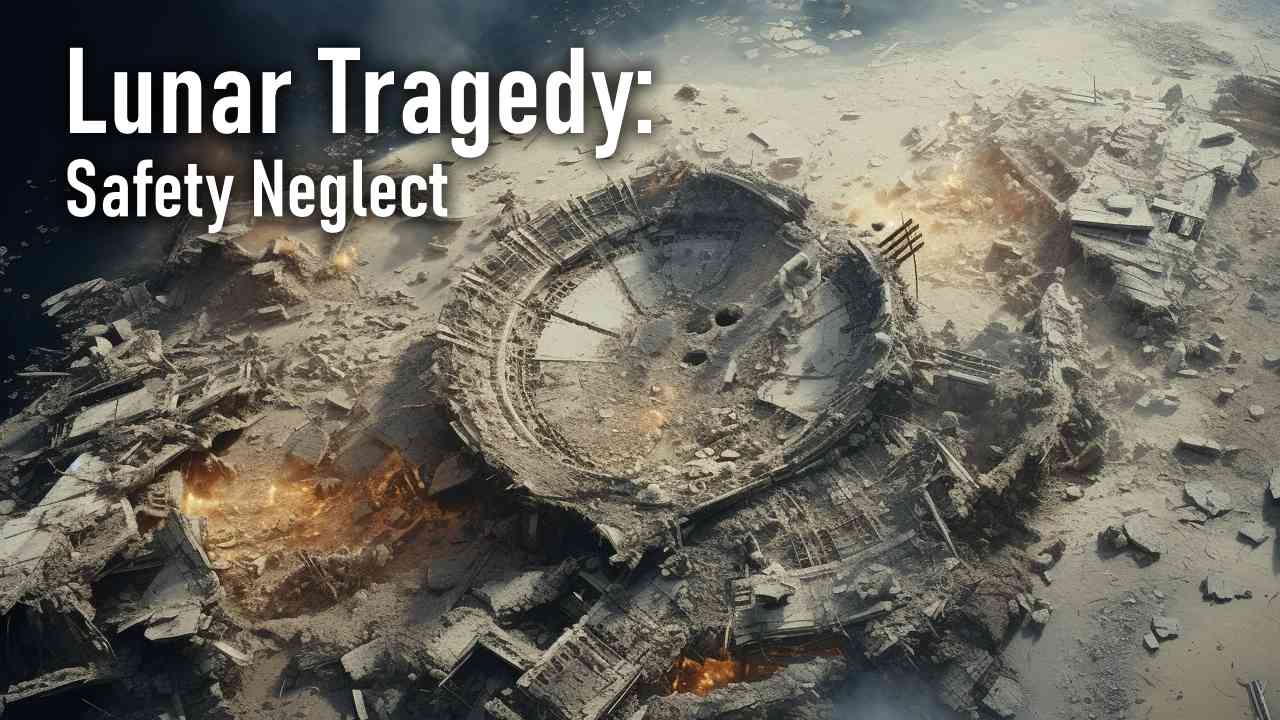
2208 Discovery of Octopus Sapiens
A new octopus species has been discovered in Gurig National Park / Australia.
The octopus genus has many different sub-species. The common octopus, octopus vulgaris, is in reality a whole species complex, a number of related but slightly different species. Some differ in their physiology, others only by their behavior. Some octopus species die after laying eggs, others protect their clutch.
The newly discovered octopus population in Gurig National Park belongs to those that protect their eggs. Males and females watch over the larvae until they hatch. Even then the parents stay together and protect their offspring. Indeed, Octopus Sapiens offspring is lovingly cared for. Adults pass on their knowledge. Know-how and skills do not get lost with each generation.
They are at least as intelligent as the great apes. Some scientists believe that their intelligence is between that of apes and humans. The new species is therefore called "Octopus Sapiens".
The population lives in seclusion. Almost all individuals flee from humans, but not from other marine animals. Most attempts to watch Octopus Sapiens fail. They shy away from well camouflaged cameras. Apparently, they discover even millimeter sized observation drones.
There is a recording made by a team at the University of Chittagong in which young octopuses group around adults using tools together. Some scientists interpret this behavior as school like teaching. Others believe the recording is just a coincidence.
In captivity, they behave differently than in the wild. Unlike other octopus species – who quite willingly submit to any kind of scientific experiment – Octopus Sapiens is extremely uncooperative and introverted in captivity. The fact, that Octopus Sapiens eludes investigation, both in their natural habitat and in captivity, is considered a sign of intelligence.
2209 Catastrophic Decompression on the Moon

The penal colony, a sprawling complex known as the Artemis Archipelago, was primarily built to house prisoners who had been deported to the moon under a controversial initiative by Earth's governments and corporations. For decades, the Archipelago and other similar colonies served as the backbone of lunar mining operations. However, these labor centers were notorious for their deplorable conditions and exploitative labor practices. The safety protocols and emergency systems were woefully inadequate, reflecting the establishment's blatant disregard for the well-being of its denizens.
The colony's most deadly oversight lay in its emergency decompression system. Originally constructed to handle sudden changes in pressure within the complex, these systems had been neglected, subject to shoddy maintenance and constant budget cuts. Two weeks prior to the catastrophic event, the emergency hatches had been taken offline for maintenance, a routine occurrence that typically went unnoticed. However, on the fateful day of the catastrophe, these hatches would prove to be the colony's Achilles heel.
As luck would have it, a meteoroid storm struck the Artemis Archipelago that day. A few rogue meteoroids, no larger than a human fist, breached the colony's largest dome causing a big rupture that quickly vented air. In normal circumstances, the impact would have been mitigated by the emergency decompression system. It would have isolated the compromised, allowing the rest of the colony to remain habitable. However, due to the system's downtime, the emergency hatches failed to respond.
In a matter of moments, most of the colony was exposed to the lunar vacuum. The sudden decompression tore apart living quarters, workstations, and life support systems alike. The surface areas of the Archipelago bore the brunt of the destruction, bombarded by debris and shrapnel propelled by the violent gusts of escaping air.
The aftermath of the disaster was deeply troubling, especially given the challenges of providing help on such a large scale. While rescue operations were promptly launched from Earth, the vast distance and the severity of the situation made the task daunting.
This tragic event ushered in a new era of awareness and advocacy for space labor rights. It accelerated the ongoing campaigns against the use of penal labor in outer space and bolstered arguments for the enforcement of stringent safety regulations. In the years that followed, the incident became a rallying point for activists, leading to significant reforms in space labor practices and to an end of forced labor on the moon by 2215.
Latest Articles
2337 Lunar Takeover
2222 Space Piracy
2366 Orbital Economics
2234 Orbit's End
2333 Metric Impulse Drive
3308 Supernova
3361 First Humanity
2326 No Interplanetary War
2247 Quantum Leap
2312 Alien Spaceship
2158 Space Patrol
2284 Great Separation
2321 Earth Isolation
2205 Corporate Cosmos
2179 Private Asteroid Base
2231 United Planets
2248 Gemini Disaster
2291 Illegal Research
2303 Space Trader Coup
2318 Earth Union
Absolute Highlights
(20 of 62)
2091 Tree of Life
2115 Life-Themes
2168 Spaceship Udyama
2222 Space Piracy
2231 United Planets
2321 Earth Isolation
2445 Scum Festival
2478 Raid in the Asteroid Belt
2501 Extraplanetary Exploration
2532 The Outer System Wipe
2544 News of the Century
2681 An Ancient Robot Civilization
2750 Executive Decision
2844 Digital Discovery
2949 Queen of Marduk
2956 Feudal Conspiracy
3050 Knights of the Royal Guard
3110 Fragmentary Outer System
3340 Strategic Initiative
3365 A Quantum Leap
 2205
Corporate Cosmos
2205
Corporate Cosmos

 2222
Space Piracy
2222
Space Piracy